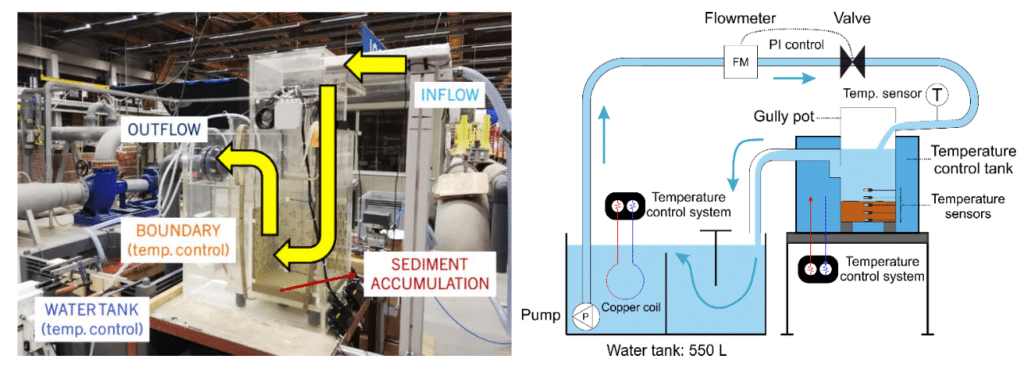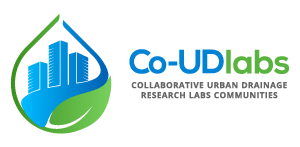Joint Research Activity: Advanced methods for the characterisation and monitoring of sediments in gully pots
Partners involved
- Deltares, The Netherlands
- Universidade da Coruña (UDC), Spain
About the project
This project was part of the Co-UDlabs Joint Research Activities based at Deltares, with the collaboration of UDC. The objective of the project was the development of advanced methods for the characterisation and monitoring of sediments in gully pots (transitional infrastructures between surface runoff flows and the drainage pipes which, at the same time, act as sand traps) as part of a broader project on the development of monitoring tools based on temperature sensors and heat transfer analysis to estimate sediment build-up processes in urban drainage systems.
The precursor to this project involved researchers from UDC and EAWAG, who performed laboratory-scale measurements on the heat transfer processes of sediments reproducing temperature conditions in combined sewer pipes. Three experimental campaigns were carried out, including experiments in a 1:1 gully pot model at the research facilities of Deltares and field measurements in the South Holland area (The Hague, Delft and Rotterdam).
Main findings
- A monitoring system and a simplified heat transfer model were developed to measure sediment accumulation in gully pots. This model showed a good correlation between sediment accumulation and the effect on temperature, giving rise to a novel technique to measure the levels of sediment deposition in gully pots.
- Gully pots reduce sediment loads in sewer systems during rainfall, avoiding overloading the treatment systems located downstream. However, if they are not cleaned at the correct intervals then they do not function as intended: manual inspection and cleaning too early or too late result in extra costs. The substitution of manual inspection with the temperature monitoring system allows for cleaning at the optimal time, reducing overall costs and ensuring the gully-pots work effectively.
Successful outcomes:
- This technique has been developed at the laboratory level and has been successfully applied in the field.
- The initial methodology was developed for sewer pipes, but the results of the first experimental campaigns indicated the potential application in other urban drainage systems.
- In addition to the temperature-based system, new ideas for the development of monitoring systems and characterization of solids in urban drainage systems emerged:
- The development of a TDR (Time Domain Reflectrometry) system was promoted to measure the thickness of the grease generated on the surface of pumping stations. The TDR system consists in an active electromagnetic wave that allows the identification of interfaces between materials by changes in their properties.
- A new research project was initiated beyond Co-UDlabs to investigate the transport of plastics and urban waste through gully pots.
- The experimental work conducted in the gully pot model at Deltares research facilities formed part of a Master of Science thesis, which was supervised by researchers from Deltares, UDC and professors from the Institute for Water Education (Delft, Netherlands).
- For the installation of the measuring equipment in the field, the researchers had the collaboration of the company vandervalk+degroot (Poeldijk, Netherlands), responsible for the cleaning of gully pots in The Hague (Netherlands), and the municipality of Rotterdam (Netherlands). The feedback received for the development of the proposed idea was positive by both entities, with which Deltares keeps a continuous communication.
- Results have been disseminated at the Novatech (3-7 July 2023) and JIA (23 and 24 October 2023) conferences.
Useful links:
- Journal article: https://zenodo.org/records/13936246
- Dataset: https://zenodo.org/records/11127893
- ICUD Conference paper: https://zenodo.org/records/13935911


